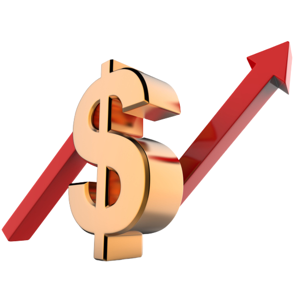Tavex uses cookies to ensure website functionality and improve your user experience. Collecting data from cookies helps us provide the best experience for you, keeps your account secure and allows us to personalise advert content. You can find out more in our cookie policy.
Please select what cookies you allow us to use
Cookies are small files of letters and digits downloaded and saved on your computer or another device (for instance, a mobile phone, a tablet) and saved in your browser while you visit a website. They can be used to track the pages you visit on the website, save the information you enter or remember your preferences such as language settings as long as you’re browsing the website.
| Cookie name | Cookie description | Cookie duration |
|---|---|---|
| tavex_cookie_consent | Stores cookie consent options selected | 60 weeks |
| tavex_customer | Tavex customer ID | 30 days |
| wp-wpml_current_language | Stores selected language | 1 day |
| AWSALB | AWS ALB sticky session cookie | 6 days |
| AWSALBCORS | AWS ALB sticky session cookie | 6 days |
| NO_CACHE | Used to disable page caching | 1 day |
| PHPSESSID | Identifier for PHP session | Session |
| latest_news | Helps to keep notifications relevant by storing the latest news shown | 29 days |
| latest_news_flash | Helps to keep notifications relevant by storing the latest news shown | 29 days |
| tavex_recently_viewed_products | List of recently viewed products | 1 day |
| tavex_compare_amount | Number of items in product comparison view | 1 day |
| Cookie name | Cookie description | Cookie duration |
|---|---|---|
| chart-widget-tab-*-*-* | Remembers last chart options (i.e currency, time period, etc) | 29 days |
| archive_layout | Stores selected product layout on category pages | 1 day |
| Cookie name | Cookie description | Cookie duration |
|---|---|---|
| cartstack.com-* | Used for tracking abandoned shopping carts | 1 year |
| _omappvp | Used by OptinMonster for determining new vs. returning visitors. Expires in 11 years | 11 years |
| _omappvs | Used by OptinMonster for determining when a new visitor becomes a returning visitor | Session |
| om* | Used by OptinMonster to track interactions with campaigns | Persistent |
| Cookie name | Cookie description | Cookie duration |
|---|---|---|
| _ga | Used to distinguish users | 2 years |
| _gid | Used to distinguish users | 24 hours |
| _ga_* | Used to persist session state | 2 years |
| _gac_* | Contains campaign related information | 90 days |
| _gat_gtag_* | Used to throttle request rate | 1 minute |
| _fbc | Facebook advertisement cookie | 2 years |
| _fbp | Facebook cookie for distinguishing unique users | 2 years |
The Price of Gold is Soaring. Will the Trend Continue?

Over the past week, the price of gold has reached unprecedented levels, breaking through crucial resistance points. This development indicates that, from a technical standpoint, there are no longer any barriers to further price increases.
Moreover, when considering the strong fundamental factors alongside the technical indicators, we can anticipate a substantial rise in gold prices throughout the year.
In the immediate term, gold’s price has escalated rapidly, a pace that may not be maintainable over time. It’s uncertain how long this sharp uptrend will continue. I foresee a minor correction in the gold market within the next 2 to 4 weeks. Nonetheless, this anticipated short-term adjustment does not alter the positive outlook for gold in the long run.
Breaking Significant Resistance Levels

Since the beginning of 2020, gold prices have surged to new peaks on four occasions, each time reaching the $2,049 to $2,079 range. These figures represent the closing prices for each day, which hold significant value in technical analysis. Recently, however, gold has managed to climb well beyond this range and sustain its higher value.
The price movements over the last few days are crucial for long-term analysis due to the sustained breach of previously established resistance levels. On March 1, gold closed at $2,082.7 per ounce, and by March 4, it had risen to $2,114.3 per ounce. As of March 5, the date of this analysis, gold is trading at $2,139 per ounce.
From a psychological standpoint, the $2,000 mark is a significant threshold for gold, which, until December of this year, typically remained above this level for only a short period. Observing the peaks in 2020, 2022, and 2023, where gold surpassed the $2,000 mark and reached highs within the $2,050 to $2,080 range, it is evident that, historically, prices quickly retreated from these levels.
A Paradigm Shift in the Gold Market

This established pattern underwent a dramatic transformation last December when gold achieved a new record high, closing at $2,079. The following day witnessed an extraordinary surge, with gold momentarily spiking to $2,149 an ounce (intraday price) within a matter of hours, only to undergo a sharp reversal shortly thereafter.
However, what set this occurrence apart from previous years’ price movements was gold’s ability to maintain its stance above the $2,000 threshold after hitting the record, essentially establishing a new support base at this level.
Consequently, the $2,000 mark began to serve as a support level rather than just a psychological barrier
The accompanying chart vividly illustrates how, in recent months, gold has consistently bounced back swiftly after dipping below the $2,000 level, as highlighted by the green boxes.
While gold may experience short-term retractions from its recent highs, the price movement witnessed in the past few days holds significant long-term implications. Looking ahead, gold now faces no technical resistance within the $2,050 to $2,080 range, indicating a potentially unobstructed path for future appreciation.
In contrast, silver has not seen a comparable increase in value.
Currently, silver is trading at almost 50 percent below its peak levels from 2011, hovering around $24 per ounce
However, it’s important to recognise that silver often begins to rally after gold, and during bullish cycles, it tends to rise at a much faster rate than gold. The notion of silver being undervalued in relation to gold is explored further here, with additional insights into when silver’s price might begin its ascent available here.
Strong Fundamentals Fuel Long-Term Surge in Gold Prices

The long-term ascent in gold prices is underpinned by a robust fundamental landscape, which may be considered even more critical than its technical counterpart. The gold market is bolstered by several strong fundamental factors: central banks are purchasing gold at unprecedented levels, demand from China remains vigorous, and there is a widespread expectation of declining interest rates. Concurrently, national debt levels have reached all-time highs, and the cost of servicing this debt is ballooning, edging us closer to a potential national debt crisis.
Furthermore, central banks set a record last year for gold purchases, and the World Gold Council forecasts that the active accumulation of gold reserves will persist into this year. In 2023, for the second consecutive year, more than 1,000 tonnes of gold were acquired, marking the highest level of purchases since the 1950s.
Last year witnessed a record-breaking demand for physical gold, driven not only by central banks but also by Chinese households investing in gold
While investment demand for physical gold significantly dwindled in the US and Europe, the surge in China more than compensated for this decline.
Additionally, market anticipation of forthcoming interest rate cuts by central banks and The Federal Reserve is expected to lower the opportunity cost of holding gold, further bolstering its prices.
Read more on the topic here: The Federal Reserve
Notably, the correlation between real interest rates (interest rates adjusted for the rate of inflation) and gold prices seems to have diminished. This implies that, despite the persistence of higher interest rates, gold’s value and spot price continues to climb rapidly. Further insights into how real interest rates affect gold prices can be found here.
Maintaining high interest rates poses a significant challenge for central banks, as it jeopardises both economic stability and countries’ capacity to manage their debts. When viewed from a broader and long-term perspective, the enormity of these debts is such that repaying them without resorting to currency inflation seems unfeasible. This scenario is a key factor bolstering the gold market over the long term.
Given the substantial enhancements in both the technical and fundamental landscapes of gold, I anticipate a notable increase in its price this year, potentially reaching a range of $2,300 to $3,000 (approximately €2,100 to €2,800). In the short term (2-6 weeks), however, the recent rapid price surge may not be maintainable, and a modest correction in the market could likely occur soon.
Become more informed and read the gold market summary about the gold market in February 2024 here.


















